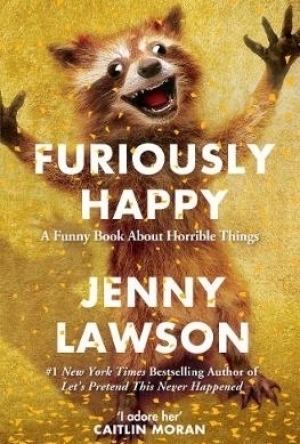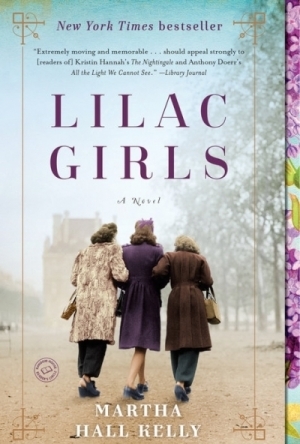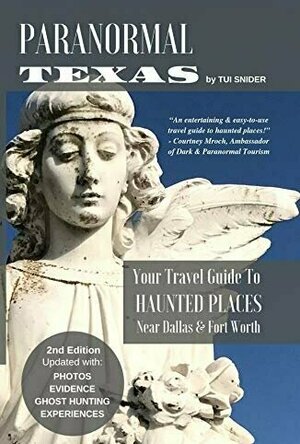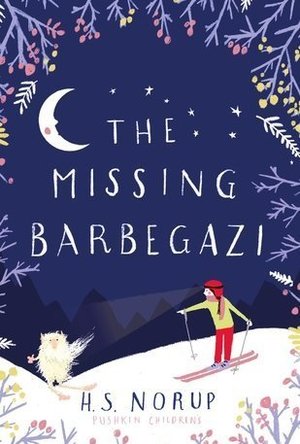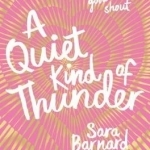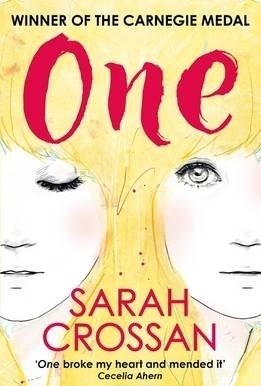Search
Gareth von Kallenbach (980 KP) rated Fifty Shades of Grey (2015) in Movies
Aug 6, 2019
remember thinking, after reading the first couple of chapters of Fifty Shades of Grey two years ago, “Is this guy a vampire?” E.L. James’ description of Christian Grey brought to mind Edward of the Twilight series and the heroine, Anastasia Steele’s clumsy entrance into Grey’s office reminded me of Bella. I was so certain I would find out Grey was a vampire in the following chapters.
So it wasn’t too much of a surprise for me when I learned the book started out as Twilight fan fiction. The hero and heroine were clearly patterned after Bella and Edward. So whenever someone asked me what the book was about, I would tell them, “It’s an awfully written Twilight with a lot of sex and some bondage and spanking. “ That being said, I’m hardly a book snob. I’ll read just about anything, and while I may complain the whole time, I’ll finish the series if one exists. But even casual readers should be able to recognize badly written fiction when it smacks them in the face like Fifty Shades of Grey.
When I heard they were making a movie, I figured it would be a Rated R or NC-17 version Twilight. I played the game along with other millions of women on who should be the leads. I picked Anna Kendrick and Ian Somerhalder. I wasn’t too disappointed with the actual picks (I think that required actually caring), but the trailers did not endear Dakota Johnson to me at all. On the way to the screener, I joked with my husband, Gareth, that I expected to see Dakota Johnson and Jamie Dornan doing a lot of gasping or scowling with mouth agape since that seemed to be their go-to reactions in the book. (James is fond of writing about jaw-drops and sharp intakes of breath in her books).
I had to make him promise to refrain from making Mystery Science Theater 3000 commentary during the movie, but within the first 5 minutes he recognized some landmarks and leaned over to ask “Wait. She went to WSU?” When I nodded, Gareth, a proud UW Husky, leaned back, shook his head and muttered, “Already disappointed.” We both actually enjoyed seeing the Seattle backdrop, all shiny and urbane, at least in Grey’s world. I thought Gareth was talking about the ridiculousness of Christian Grey’s wealth when he whispered, “This movie is so full of it.” I raised my eyebrows at him and he said, “You know you can’t find parking that easily in Seattle.”
Being familiar with the books, I knew what to expect and for the most part, director Sam Taylor-Johnson, greatly improved on weak source material. Dakota Johnson was a pleasant surprise, making Anastasia smart, witty and much more relatable than the book Ana. Jamie Dornan was very easy to look at. Listening to? Not so much. It’s been reported that E. L. James’ insisted the dialogue from her books remain unchanged. One wonders if she also insisted Dornan deliver his parts as if he were reading her book. Reluctantly and under great duress.
Fans of the books will notice a few changes, and of course it won’t be as graphic as the book, but there are at least 25 minutes of steamy scenes. All in all, this may be one of those rare times the movie is better than the book. Like the books, now that I’m invested, I will watch the next two in the trilogy. Mainly thanks to Dakota Johnson. If nothing else, I have to give Fifty Shades of Grey credit for inspiring passion – in debates about abusive relationships, true BDSM and the age-old bad boy vs. good men attraction. I don’t think I’ve engaged in this many debates with friends and coworkers about a non-sci-fi movie before. It could very well inspire all kinds of other passion for those who give in and escort their significant other to this movie this weekend. But hopefully, unlike the leads in the movie, those inspired will reach a satisfying finish rather than a stylized fade-out to the morning after.
So it wasn’t too much of a surprise for me when I learned the book started out as Twilight fan fiction. The hero and heroine were clearly patterned after Bella and Edward. So whenever someone asked me what the book was about, I would tell them, “It’s an awfully written Twilight with a lot of sex and some bondage and spanking. “ That being said, I’m hardly a book snob. I’ll read just about anything, and while I may complain the whole time, I’ll finish the series if one exists. But even casual readers should be able to recognize badly written fiction when it smacks them in the face like Fifty Shades of Grey.
When I heard they were making a movie, I figured it would be a Rated R or NC-17 version Twilight. I played the game along with other millions of women on who should be the leads. I picked Anna Kendrick and Ian Somerhalder. I wasn’t too disappointed with the actual picks (I think that required actually caring), but the trailers did not endear Dakota Johnson to me at all. On the way to the screener, I joked with my husband, Gareth, that I expected to see Dakota Johnson and Jamie Dornan doing a lot of gasping or scowling with mouth agape since that seemed to be their go-to reactions in the book. (James is fond of writing about jaw-drops and sharp intakes of breath in her books).
I had to make him promise to refrain from making Mystery Science Theater 3000 commentary during the movie, but within the first 5 minutes he recognized some landmarks and leaned over to ask “Wait. She went to WSU?” When I nodded, Gareth, a proud UW Husky, leaned back, shook his head and muttered, “Already disappointed.” We both actually enjoyed seeing the Seattle backdrop, all shiny and urbane, at least in Grey’s world. I thought Gareth was talking about the ridiculousness of Christian Grey’s wealth when he whispered, “This movie is so full of it.” I raised my eyebrows at him and he said, “You know you can’t find parking that easily in Seattle.”
Being familiar with the books, I knew what to expect and for the most part, director Sam Taylor-Johnson, greatly improved on weak source material. Dakota Johnson was a pleasant surprise, making Anastasia smart, witty and much more relatable than the book Ana. Jamie Dornan was very easy to look at. Listening to? Not so much. It’s been reported that E. L. James’ insisted the dialogue from her books remain unchanged. One wonders if she also insisted Dornan deliver his parts as if he were reading her book. Reluctantly and under great duress.
Fans of the books will notice a few changes, and of course it won’t be as graphic as the book, but there are at least 25 minutes of steamy scenes. All in all, this may be one of those rare times the movie is better than the book. Like the books, now that I’m invested, I will watch the next two in the trilogy. Mainly thanks to Dakota Johnson. If nothing else, I have to give Fifty Shades of Grey credit for inspiring passion – in debates about abusive relationships, true BDSM and the age-old bad boy vs. good men attraction. I don’t think I’ve engaged in this many debates with friends and coworkers about a non-sci-fi movie before. It could very well inspire all kinds of other passion for those who give in and escort their significant other to this movie this weekend. But hopefully, unlike the leads in the movie, those inspired will reach a satisfying finish rather than a stylized fade-out to the morning after.
Louise (64 KP) rated Furiously Happy in Books
Jul 2, 2018
So! where do I start! hmmmm....
This a non-fiction memoir about a woman, Jenny Lawson who suffers from mental illness, but not just one she has a whole mixed bag of mental health problems, Jenny suffers from depression, anxiety, insomnia, ADD and others.
This is her memoir of how she copes with mental health and what is like to live with these debilitating illnesses. The book is told in several short stories of Jenny's life, there are also pictures added in several of the chapters.(proof that these things really happened).
Her husband Victor is a saint that's all I can say, Jenny is crazy but in a good way crazy, she just talks about the most random things ever, but this a symptom of anxiety you over think things and you can tell by her writing.
This book is very funny, and Jenny isn't bothered about the stigma that is still attached to mental health, she is just being herself which is so refreshing.
I never heard of Jenny Lawson when I requested this book, I was more drawn to the synopsis and the amazing raccoon on the front cover. Jenny is a taxidermist's daughter and has a lot of love for stuffed animals which is clear in the book and shown with pictures.
I really could relate to Jenny as I suffer from depression and anxiety, I knew where she was coming from and when she was explaining they symptoms, I was like yes, I get that too! The book is very funny in places, but there are parts which I think are just silly!
My favourite part of the book has to be when she is trying to convinve Victor to get another cat so she can call it the 'President', her ideas are very witty and weird - i mean who thinks of stuff like this.
Whilst this book was good and funny, I was wanting her to be a bit more serious in some parts. I wanted to know how she really felt without trying to make it humorous. And yeah I know it's a serious topic and she is trying to make it light-hearted but I feel that maybe she is still holding back on what she really wants to say.
There is a trigger warning for this book, it does discuss self harm and suicide, so if you are easily offended I would not suggest it for you. Also there is a lot of swearing/cussing.
This is Jenny's second book, first being Let's pretend this never happened and also she has her own blog called the bloggess which I will be following.
I would recommend this book for anyone suffering from mental illness or has a family member/friends that does.
I rated this book 3.5 stars out of 5.
For more of my reviews please check out www.louiselovesbooks.wordpress.com
This a non-fiction memoir about a woman, Jenny Lawson who suffers from mental illness, but not just one she has a whole mixed bag of mental health problems, Jenny suffers from depression, anxiety, insomnia, ADD and others.
This is her memoir of how she copes with mental health and what is like to live with these debilitating illnesses. The book is told in several short stories of Jenny's life, there are also pictures added in several of the chapters.(proof that these things really happened).
Her husband Victor is a saint that's all I can say, Jenny is crazy but in a good way crazy, she just talks about the most random things ever, but this a symptom of anxiety you over think things and you can tell by her writing.
This book is very funny, and Jenny isn't bothered about the stigma that is still attached to mental health, she is just being herself which is so refreshing.
I never heard of Jenny Lawson when I requested this book, I was more drawn to the synopsis and the amazing raccoon on the front cover. Jenny is a taxidermist's daughter and has a lot of love for stuffed animals which is clear in the book and shown with pictures.
I really could relate to Jenny as I suffer from depression and anxiety, I knew where she was coming from and when she was explaining they symptoms, I was like yes, I get that too! The book is very funny in places, but there are parts which I think are just silly!
My favourite part of the book has to be when she is trying to convinve Victor to get another cat so she can call it the 'President', her ideas are very witty and weird - i mean who thinks of stuff like this.
Whilst this book was good and funny, I was wanting her to be a bit more serious in some parts. I wanted to know how she really felt without trying to make it humorous. And yeah I know it's a serious topic and she is trying to make it light-hearted but I feel that maybe she is still holding back on what she really wants to say.
There is a trigger warning for this book, it does discuss self harm and suicide, so if you are easily offended I would not suggest it for you. Also there is a lot of swearing/cussing.
This is Jenny's second book, first being Let's pretend this never happened and also she has her own blog called the bloggess which I will be following.
I would recommend this book for anyone suffering from mental illness or has a family member/friends that does.
I rated this book 3.5 stars out of 5.
For more of my reviews please check out www.louiselovesbooks.wordpress.com

Reading Trainer for iPhone
Education and Productivity
App
Reading Trainer improves your reading speed and retention rate with 12 challenging and fun...
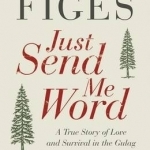
Just Send Me Word: A True Story of Love and Survival in the Gulag
Book
From Orlando Figes, international bestselling author of A People's Tragedy, Just Send Me Word is the...
The Chocolate Lady (94 KP) rated Lilac Girls in Books
Oct 5, 2020
This novel is very nicely written, with interesting characters. In particular, the protagonist Caroline is beautifully formed, with a life that is fascinating for those who know little about how Americans tried to help those who became unwitting refugees in the US after Hitler invaded their homelands. However, we must remember that Holocaust novels are a dime a dozen. This is why I was hoping that this novel would be different, particularly since the blurb for this book talks about Christine and her helping two survivors of the women's camp Ravensbruck. Unfortunately, the detailed information about the two other women in this story, and their introduction to Ravensbruck was, in my opinion, too much back-story. Although retelling the grim and gory ways that the Nazis treated their prisoners is a necessary evil, I somehow felt that this book included these scenes only to evoke pity for these characters. I don't want to pity characters, I want to have empathy for them, to care about them, and the author let me down with this.
In addition - and I hope this doesn't sound racist or snobbish - as a Jew, I have a hard time with Holocaust novels that seem to outwardly ignore how the Nazis treated the Jews, and only focuses on the other "undesirables." I realize that the Nazis didn't only kill Jews, but they were their primary target, and to avoid that altogether was disingenuous, to say the least. However, I was glad that this book didn't focus on any overtly Christian themes, even though I believe that there is a market for Holocaust stories within the Christian Fiction genre (see my review of the novel The Butterfly and the Violin by Kristy Cambron here http://drchazan.blogspot.com/2014/07/beauty-out-of-ugliness.html for more on my feelings about this).
Furthermore, the only Jewish reference I found in this novel was a passing reference to visiting the Ghetto and a remembrance of eating a Hanukkah delicacy. Unfortunately, the author didn't do her research properly, and the character said she remembered eating a type of doughnut that the Jewish bakers made for the holiday. Those doughnuts - known as "sufganiot" were never part of any Eastern European Hanukkah celebration at that time. In fact, sufganiot that are popular among Jews today, come from the Jews of North Africa and Arab countries. The word, sufganiot, comes from the Arabic and Hebrew words that mean sponge. While Jews in Poland did make something similar, their popularity as a particularly Hanukkah delicacy among Easter European Jews only coincided after Ashkenazi and Mizrahi Jews came together in Israel (i.e., post-1948). All of this is why I cannot give this book a rating of more than two and a half stars out of five, but I'm certain that it will find a much more sympathetic audience among non-Jewish readers.
In addition - and I hope this doesn't sound racist or snobbish - as a Jew, I have a hard time with Holocaust novels that seem to outwardly ignore how the Nazis treated the Jews, and only focuses on the other "undesirables." I realize that the Nazis didn't only kill Jews, but they were their primary target, and to avoid that altogether was disingenuous, to say the least. However, I was glad that this book didn't focus on any overtly Christian themes, even though I believe that there is a market for Holocaust stories within the Christian Fiction genre (see my review of the novel The Butterfly and the Violin by Kristy Cambron here http://drchazan.blogspot.com/2014/07/beauty-out-of-ugliness.html for more on my feelings about this).
Furthermore, the only Jewish reference I found in this novel was a passing reference to visiting the Ghetto and a remembrance of eating a Hanukkah delicacy. Unfortunately, the author didn't do her research properly, and the character said she remembered eating a type of doughnut that the Jewish bakers made for the holiday. Those doughnuts - known as "sufganiot" were never part of any Eastern European Hanukkah celebration at that time. In fact, sufganiot that are popular among Jews today, come from the Jews of North Africa and Arab countries. The word, sufganiot, comes from the Arabic and Hebrew words that mean sponge. While Jews in Poland did make something similar, their popularity as a particularly Hanukkah delicacy among Easter European Jews only coincided after Ashkenazi and Mizrahi Jews came together in Israel (i.e., post-1948). All of this is why I cannot give this book a rating of more than two and a half stars out of five, but I'm certain that it will find a much more sympathetic audience among non-Jewish readers.

Reading Trainer
Education and Productivity
App
Reading Trainer improves your reading speed and retention rate with 12 challenging and fun...
Those who know me know that I love the paranormal, mainly ghosts. When a chance came up to read Paranormal Texas by Tui Snider came about, I couldn't say no. As a Texas girl myself and a fan of all places ghostly, this seemed like the perfect book for me. I wasn't wrong!
Paranormal Texas by Tui Snider is a fantastic guidebook for those looking to chase ghosts in the great state of Texas, more specifically, towns and cities near Dallas and Fort Worth. I don't live near Dallas or Fort Worth, but I've been on vacation in and around there, and I will be taking future vacations in and around that area. In fact, I've been to two of the haunted locations featured in this book! I never even knew they were supposedly haunted at the time.
Tui Snider does a fantastic job of keeping readers interested in Paranormal Texas. She gives information about each place as well as local lore and/or personal encounters with each place. Tui also has a few urban legends in her book which are great for approaching locals with as long as they're into that sort of thing. Sometimes she gives the history behind each place which was my favorite thing. Personally, I would have liked to read more history about each place, but I was still happy nonetheless. What I really enjoyed was each place Tui mentioned wasn't a wall of text. It was concise and to the point. She also included photos of each place. These aren't photos of evidence though. The photos are just of the actual place itself which was a tad bit disappointing. I would have liked to see some photos of alleged evidence. However, Tui does have a website where you can look at paranormal photos, EVPs (electronic voice phenomenon), and more. (I'll go into detail about her website a little later.) All the photos are in black and white in my copy of Paranormal Texas. Mine is an ARC, so maybe the actual copies will have some colored photos.
One thing I really enjoyed about Paranormal Texas is that Tui Snider lists the address of each place, so you don't have to bother searching for it yourself. If it's a harder place to get to, Tui gives you directions of how best to get there. I thought this was a fantastic touch because when you want to look for ghosts, the last thing you want to do is waste time trying to find an address.
Another thing I am grateful for is how the book has each city listed alphabetically at the beginning and then each haunted location is listed for that city. This makes it a lot easier to find what city you're interested in to do some ghost exploring!
However, Paranormal Texas isn't just about haunted places in Texas. Tui Snider also writes about the techinal terms that come with ghost hunting which is great for those that are new to ghost hunting as well as how to be a respectful thrill seeker which has great information for even seasoned ghost hunters. I would advise not skipping the beginning of the book that has all this great advice simply because it will help enrich your reading experience with Paranormal Texas or any paranormal non-fiction book. Heck, it will probably even enrich your experience with even paranormal and supernatural fiction books!
Be sure to check out Tui Snider's online evidence database for Paranormal Texas which she mentions in her book. Like Paranormal Texas, she has each city listed alphabetically for you to listen and see supposed paranormal happenings. This is such a fantastic accompaniment to the book. It really makes the book come alive. It's like you're there! Definitely check out her online database. It will give you the chills. It's still a work in progress as Tui encourages readers to send in their own paranormal evidence as well, but still, it is great nonetheless.
Paranormal Texas is such a great guide for old and new ghost hunters alike. There is such a plethora of information within the pages. Trust me, not only are you learning about new ghost locations, but you are also being schooled on so much more. It's like a bonus lesson in history and ghost hunting, but one that is a lot of fun. I'd recommend leaving the lights on for this book. I'd definitely recommend Paranormal Texas by Tui Snider to those aged 16+ who love ghost stories, Texas, or those who just love to be spooked. You won't be disappointed!
--
(A special thank you to Tui Snider for providing me with a paperback ARC of Paranormal Texas in exchange for an honest and unbiased review.)
Paranormal Texas by Tui Snider is a fantastic guidebook for those looking to chase ghosts in the great state of Texas, more specifically, towns and cities near Dallas and Fort Worth. I don't live near Dallas or Fort Worth, but I've been on vacation in and around there, and I will be taking future vacations in and around that area. In fact, I've been to two of the haunted locations featured in this book! I never even knew they were supposedly haunted at the time.
Tui Snider does a fantastic job of keeping readers interested in Paranormal Texas. She gives information about each place as well as local lore and/or personal encounters with each place. Tui also has a few urban legends in her book which are great for approaching locals with as long as they're into that sort of thing. Sometimes she gives the history behind each place which was my favorite thing. Personally, I would have liked to read more history about each place, but I was still happy nonetheless. What I really enjoyed was each place Tui mentioned wasn't a wall of text. It was concise and to the point. She also included photos of each place. These aren't photos of evidence though. The photos are just of the actual place itself which was a tad bit disappointing. I would have liked to see some photos of alleged evidence. However, Tui does have a website where you can look at paranormal photos, EVPs (electronic voice phenomenon), and more. (I'll go into detail about her website a little later.) All the photos are in black and white in my copy of Paranormal Texas. Mine is an ARC, so maybe the actual copies will have some colored photos.
One thing I really enjoyed about Paranormal Texas is that Tui Snider lists the address of each place, so you don't have to bother searching for it yourself. If it's a harder place to get to, Tui gives you directions of how best to get there. I thought this was a fantastic touch because when you want to look for ghosts, the last thing you want to do is waste time trying to find an address.
Another thing I am grateful for is how the book has each city listed alphabetically at the beginning and then each haunted location is listed for that city. This makes it a lot easier to find what city you're interested in to do some ghost exploring!
However, Paranormal Texas isn't just about haunted places in Texas. Tui Snider also writes about the techinal terms that come with ghost hunting which is great for those that are new to ghost hunting as well as how to be a respectful thrill seeker which has great information for even seasoned ghost hunters. I would advise not skipping the beginning of the book that has all this great advice simply because it will help enrich your reading experience with Paranormal Texas or any paranormal non-fiction book. Heck, it will probably even enrich your experience with even paranormal and supernatural fiction books!
Be sure to check out Tui Snider's online evidence database for Paranormal Texas which she mentions in her book. Like Paranormal Texas, she has each city listed alphabetically for you to listen and see supposed paranormal happenings. This is such a fantastic accompaniment to the book. It really makes the book come alive. It's like you're there! Definitely check out her online database. It will give you the chills. It's still a work in progress as Tui encourages readers to send in their own paranormal evidence as well, but still, it is great nonetheless.
Paranormal Texas is such a great guide for old and new ghost hunters alike. There is such a plethora of information within the pages. Trust me, not only are you learning about new ghost locations, but you are also being schooled on so much more. It's like a bonus lesson in history and ghost hunting, but one that is a lot of fun. I'd recommend leaving the lights on for this book. I'd definitely recommend Paranormal Texas by Tui Snider to those aged 16+ who love ghost stories, Texas, or those who just love to be spooked. You won't be disappointed!
--
(A special thank you to Tui Snider for providing me with a paperback ARC of Paranormal Texas in exchange for an honest and unbiased review.)
Naomi Forrest (42 KP) rated The Missing Barbegazi in Books
Jan 4, 2019
This is Helle Norup's debut novel and was featured as a Sunday Times Children's Book of the Year. It is magical and the perfect book to read as you curl up in your pyjamas with a cup of hot chocolate.
A Barbegazi, in case you are wondering as I did, is a type of Swiss mountain/snow elf with a long beard that can only live in freezing conditions and has a severe intolerance to iron. The story is told from the point of view of Tessa, a young skier and Gaiwon, a barbegazi who is hunting for his missing sister. No-one believes the barbegazi exist anymore except Tessa. The only other believer was her recently deceased opa (grandad) and a professor who wrote about them years before. The barbegazi, for their part, rescue humans who have been trapped and injured in avalanches, erasing their memories afterwards. They are extremely mistrusting of humans.
. Norup's passion for skiing, the Alps and magic are clear throughout the novel and I think this is what makes the story so captivating. I loved the development of Tessa from grieving for her grandfather and wanting everybody to believe he was right about the barbegazi to realising that fame and proving a point are less important than trust and friendship. She never wavers in her faith that the barbegazi still exist and is a headstrong and loveable character.
The highlight for me was definitely reading about the barbegazi themselves. I particularly love that despite being more than a hundred old, Gaiwon's parents still treat him like a child. I loved the argument between Gaiwon and his father as Gaiwon shouts "I cannot wait to get my own cave" and his father retorts: "You can build one right now. And take your sesquicentennial hormones with you." This highlights that Norup doesn't 'write down' to the target audience but includes wide ranging vocabulary, as well as her own inventions, such as 'potzblitz', an emphatic expression of the barbegazi.
There is peril throughout the book though this is very mild. Tessa learns that people are not always as trustworthy as they seem. I always love the text-book sections that punctuate the novel (see photo below), describing features and traits of the barbegazi. This is really effective with ambitious vocabulary for children and introduces them to another style of writing, combining fictive and non-fiction styles. The book is set between Boxing Day and New Year's Eve, that magical time when you don't know what day it really is and we are all enjoying the post-Christmas days where we live in our pyjamas, eat too much and don't really do much of anything except relax and catch up. It was simply the most perfect time to read this book and imagine I was in a gorgeous Alpine ski lodge, surrounded by magical folk who will keep me safe in the snow. This is a fantastic debut novel and I really can't wait to see what Norup offers up next. Thanks for making my Christmas even more magical, Helle!
A Barbegazi, in case you are wondering as I did, is a type of Swiss mountain/snow elf with a long beard that can only live in freezing conditions and has a severe intolerance to iron. The story is told from the point of view of Tessa, a young skier and Gaiwon, a barbegazi who is hunting for his missing sister. No-one believes the barbegazi exist anymore except Tessa. The only other believer was her recently deceased opa (grandad) and a professor who wrote about them years before. The barbegazi, for their part, rescue humans who have been trapped and injured in avalanches, erasing their memories afterwards. They are extremely mistrusting of humans.
. Norup's passion for skiing, the Alps and magic are clear throughout the novel and I think this is what makes the story so captivating. I loved the development of Tessa from grieving for her grandfather and wanting everybody to believe he was right about the barbegazi to realising that fame and proving a point are less important than trust and friendship. She never wavers in her faith that the barbegazi still exist and is a headstrong and loveable character.
The highlight for me was definitely reading about the barbegazi themselves. I particularly love that despite being more than a hundred old, Gaiwon's parents still treat him like a child. I loved the argument between Gaiwon and his father as Gaiwon shouts "I cannot wait to get my own cave" and his father retorts: "You can build one right now. And take your sesquicentennial hormones with you." This highlights that Norup doesn't 'write down' to the target audience but includes wide ranging vocabulary, as well as her own inventions, such as 'potzblitz', an emphatic expression of the barbegazi.
There is peril throughout the book though this is very mild. Tessa learns that people are not always as trustworthy as they seem. I always love the text-book sections that punctuate the novel (see photo below), describing features and traits of the barbegazi. This is really effective with ambitious vocabulary for children and introduces them to another style of writing, combining fictive and non-fiction styles. The book is set between Boxing Day and New Year's Eve, that magical time when you don't know what day it really is and we are all enjoying the post-Christmas days where we live in our pyjamas, eat too much and don't really do much of anything except relax and catch up. It was simply the most perfect time to read this book and imagine I was in a gorgeous Alpine ski lodge, surrounded by magical folk who will keep me safe in the snow. This is a fantastic debut novel and I really can't wait to see what Norup offers up next. Thanks for making my Christmas even more magical, Helle!
Louise (64 KP) rated A Quiet Kind of Thunder in Books
Jul 2, 2018
*I received a copy of this book from Netgalley and the publisher in exchange for my honest opinion*
I have been anticipating this book for months and couldn’t wait to read it. I read Beautiful Broken Things last year and really enjoyed Sara Barnard’s style of writing and how she captures teenage relationships/friendship perfectly. This book is exceptional and has blown Beautiful Broken Things out of the water.
Steffi has a condition called selective mutism, crippling shyness and anxiety, this has been her life since she can remember. Unable to find the words to communicate to people at school or in public has left her somewhat lonely especially as her best friend has left to attend a different college.
Rhys is the new guy starting at Windham sixth form, Rhys is deaf, as Steffi knows British Sign Language (BSL) they are introduced and Steffi is to be his guide for the time being until he gets to know his way around.
Being thrusted into Rhys’ world, Steffi finds another way of communicating and starts to embrace her problems head on and starts to realise she has so many possibilities out there….one of them being LOVE!
There was just so many aspects of this book that I loved for example; this is the best interpretation of anxiety I have read about in YA fiction. There is a part in the book where you get to witness Steffi’s thought process when she is anxious and it was spot on and I could really empathise with her. I also appreciated the fact that Sara Barnard didn’t use the popular trope of ‘anxiety being cured because of a boy’.
‘I don’t want a boy to be the reason I get better, what would that say about me if it is?’
I was so glad that this young girl despite her anxiety and mutism was really level-headed and wanted the change to be her doing. The topic of medication comes up several times and not once was it put in a negative light. I think anyone that suffers with anxiety will find this book relatable and show non sufferers just how much anxiety takes over your life.
The relationships in this book are freaking awesome, the family relationship was great,I loved the dynamics of the family and the different roles in which they played. The friendship between Steffi and Tem was really relatable, with them sharing gossip and worries about boys. There were so many emotional moments in this book, that had me turning the pages wanting more. The relationship between Steffi and Rhys was brilliant and cute and all things fluffy and the development is fantastic.
This book is so diverse, what with mental health, POC and disability, it was so beautifully written and had a perfect blend of them all that nothing was overshadowed.
This book is really easy read and uses different formats such as IM’s and text messages between Steffi, Rhys and Tem. There are also some lists which makes it much more fun to read.
This is a wonderful coming of age story with tons of diversity and a realistic portrayal of mental health and relationships.
I rated this 4.5/5 stars
I have been anticipating this book for months and couldn’t wait to read it. I read Beautiful Broken Things last year and really enjoyed Sara Barnard’s style of writing and how she captures teenage relationships/friendship perfectly. This book is exceptional and has blown Beautiful Broken Things out of the water.
Steffi has a condition called selective mutism, crippling shyness and anxiety, this has been her life since she can remember. Unable to find the words to communicate to people at school or in public has left her somewhat lonely especially as her best friend has left to attend a different college.
Rhys is the new guy starting at Windham sixth form, Rhys is deaf, as Steffi knows British Sign Language (BSL) they are introduced and Steffi is to be his guide for the time being until he gets to know his way around.
Being thrusted into Rhys’ world, Steffi finds another way of communicating and starts to embrace her problems head on and starts to realise she has so many possibilities out there….one of them being LOVE!
There was just so many aspects of this book that I loved for example; this is the best interpretation of anxiety I have read about in YA fiction. There is a part in the book where you get to witness Steffi’s thought process when she is anxious and it was spot on and I could really empathise with her. I also appreciated the fact that Sara Barnard didn’t use the popular trope of ‘anxiety being cured because of a boy’.
‘I don’t want a boy to be the reason I get better, what would that say about me if it is?’
I was so glad that this young girl despite her anxiety and mutism was really level-headed and wanted the change to be her doing. The topic of medication comes up several times and not once was it put in a negative light. I think anyone that suffers with anxiety will find this book relatable and show non sufferers just how much anxiety takes over your life.
The relationships in this book are freaking awesome, the family relationship was great,I loved the dynamics of the family and the different roles in which they played. The friendship between Steffi and Tem was really relatable, with them sharing gossip and worries about boys. There were so many emotional moments in this book, that had me turning the pages wanting more. The relationship between Steffi and Rhys was brilliant and cute and all things fluffy and the development is fantastic.
This book is so diverse, what with mental health, POC and disability, it was so beautifully written and had a perfect blend of them all that nothing was overshadowed.
This book is really easy read and uses different formats such as IM’s and text messages between Steffi, Rhys and Tem. There are also some lists which makes it much more fun to read.
This is a wonderful coming of age story with tons of diversity and a realistic portrayal of mental health and relationships.
I rated this 4.5/5 stars
Grace and Tippi are conjoined twins, after being homeschooled for 16 years they are forced to attend Hornbeacon High.
The city can longer fund the girls homeschooling, nor can the family afford it, together they must venture the real world of stares, nasty comments, cruelty and obstacles they have to overcome.
Will they make friends? love! could it even be a possibility?
The girls realise they have to make a heart wrenching decision not only for the family but for themselves.
Easy money
<I> If I owned a pistol i could rob a bank.
I could stick a gun in a teller's face
and demand a stack of cash
then motor off in a stolen Maserati.
I could sell drugs to kids on the street corners
or pimp out girls to the highest bidder.
I could break and law I wanted.
If they imprisoned me,
they'd have to lock up Tippi too,
which is false arrest,
Illegal,
and would never stand up in a
court of law.
If I didn't have this damn conscience,
we'd be rich.</I>
I loved this verse (above) It made me laugh at the thought, she has a point, how would that work?
My thoughts,
I loved this book, i have never read anything like this before and it was thought-provoking. I had never thought of things such as when one of them is ill, the other stays in bed until recuperation, or what if one of them falls in love? If one drinks alcohol, will the other get drunk? There were times during this book where i would stop reading and do a thinking pose like J.D from Scrubs and ponder.
This book has made me want to learn more about conjoined twins and the effects on their lives, if anyone know any other books like this let me know, even if its non fiction.
Characters:
The parents - I felt no connection to the parents whatsoever, it felt like they had given up, What with the father being made redundant, depressed, and an alcoholic. The mum was overworked in a bank. However saying that it does show you the effects and costs,strain that it can have on families.
Yasmeen - has her own problems and with that she has become hardened to bullies, the twins need a friend like this
Grace was they shyer of the two whereas Tippi was most outspoken and bitchy.
Jon - I felt no connection with him at all, I just felt he was in the story as Sarah Crossan wanted to touch on the subject of love.
Dragon I felt sorry for as she was having to fend for herself in the sense that her parents couldn't afford ballet lessons so she had to find alternative ways to carry on with her dance,
This is the first book that I have ever read in verse and it was so different, easy to read and quick. the book is 430 pages and read this in less than a day.
Its told in Grace's POV, however it would have been nice to hear from Tippi too.
Sarah Crossan touches very slightly on other subjects but doesn't delve deep into them.
She also shows you that these 2 girls have such a bond that if the possibility of separation was an option they would refuse, despite the health scares, remarks and challenges they will come across.
Overall I rate this book 4 out of 5 stars
The city can longer fund the girls homeschooling, nor can the family afford it, together they must venture the real world of stares, nasty comments, cruelty and obstacles they have to overcome.
Will they make friends? love! could it even be a possibility?
The girls realise they have to make a heart wrenching decision not only for the family but for themselves.
Easy money
<I> If I owned a pistol i could rob a bank.
I could stick a gun in a teller's face
and demand a stack of cash
then motor off in a stolen Maserati.
I could sell drugs to kids on the street corners
or pimp out girls to the highest bidder.
I could break and law I wanted.
If they imprisoned me,
they'd have to lock up Tippi too,
which is false arrest,
Illegal,
and would never stand up in a
court of law.
If I didn't have this damn conscience,
we'd be rich.</I>
I loved this verse (above) It made me laugh at the thought, she has a point, how would that work?
My thoughts,
I loved this book, i have never read anything like this before and it was thought-provoking. I had never thought of things such as when one of them is ill, the other stays in bed until recuperation, or what if one of them falls in love? If one drinks alcohol, will the other get drunk? There were times during this book where i would stop reading and do a thinking pose like J.D from Scrubs and ponder.
This book has made me want to learn more about conjoined twins and the effects on their lives, if anyone know any other books like this let me know, even if its non fiction.
Characters:
The parents - I felt no connection to the parents whatsoever, it felt like they had given up, What with the father being made redundant, depressed, and an alcoholic. The mum was overworked in a bank. However saying that it does show you the effects and costs,strain that it can have on families.
Yasmeen - has her own problems and with that she has become hardened to bullies, the twins need a friend like this
Grace was they shyer of the two whereas Tippi was most outspoken and bitchy.
Jon - I felt no connection with him at all, I just felt he was in the story as Sarah Crossan wanted to touch on the subject of love.
Dragon I felt sorry for as she was having to fend for herself in the sense that her parents couldn't afford ballet lessons so she had to find alternative ways to carry on with her dance,
This is the first book that I have ever read in verse and it was so different, easy to read and quick. the book is 430 pages and read this in less than a day.
Its told in Grace's POV, however it would have been nice to hear from Tippi too.
Sarah Crossan touches very slightly on other subjects but doesn't delve deep into them.
She also shows you that these 2 girls have such a bond that if the possibility of separation was an option they would refuse, despite the health scares, remarks and challenges they will come across.
Overall I rate this book 4 out of 5 stars

